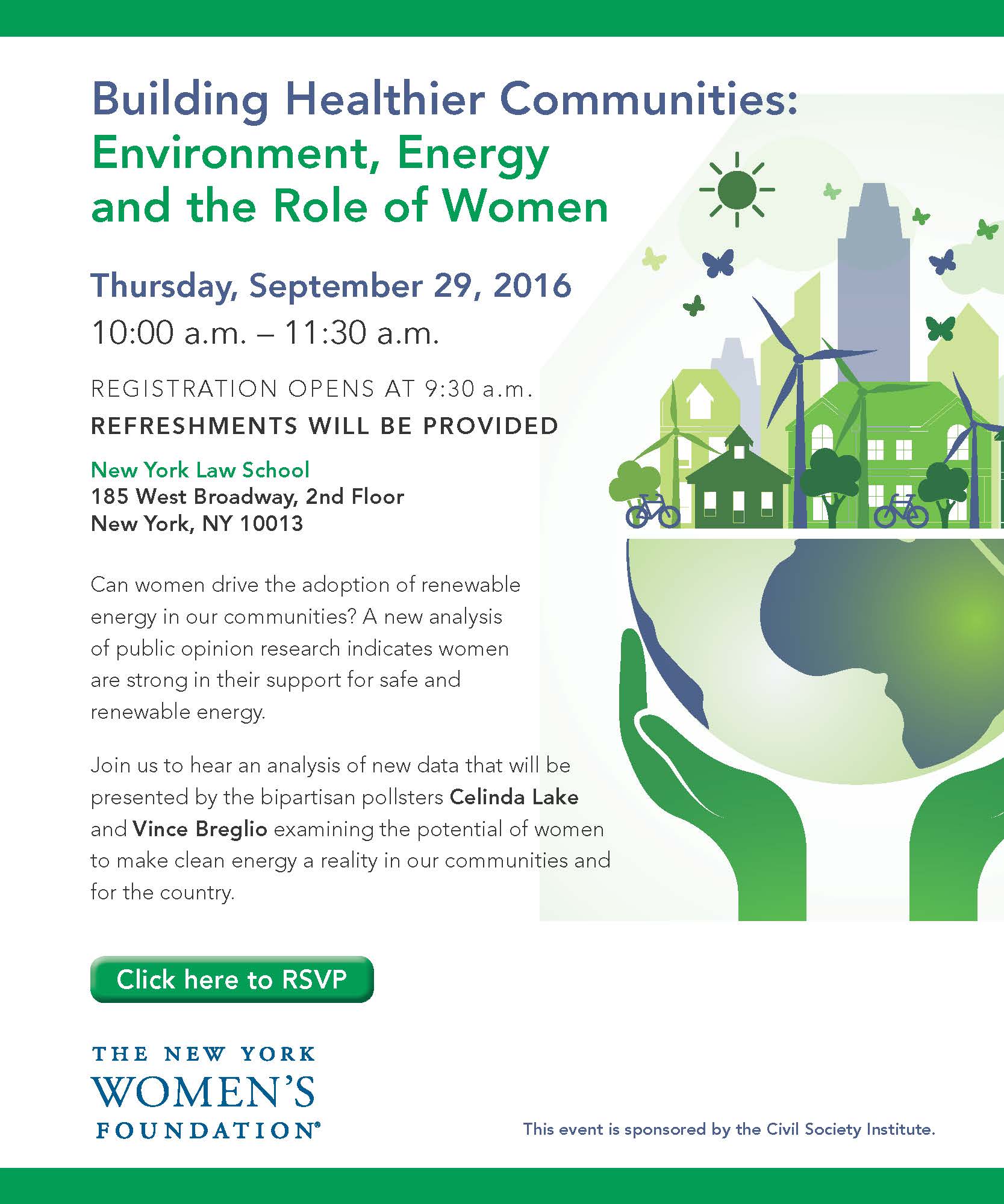di Alice Sieve
That’s the title of the conference we attended in NYC, organized by the Civil Society and the NY Women Organization partnership on Sept, 29th 2016. The meeting, set at the NY Law School, was joined by the participation of engaging panelists; and the discussion had been led by two very well-prepared persons, Celinda Lake, one of the Democratic Party’s leading polical strategists, and Vincent J. Breglio, senior manager in strategic consulting for several organizations. They discussed different environmental issues related to the women’s involvement in determining the future of renewable energy.
As Celinda Lake pointed out through accurate statistics, women are often left aside from the decision making, because the possible options of renewable energy are not well-known, and also because there are other deep aspects to be considered. One aspect that must be taken into account – on which Vince J. Breglio also insisted – is the transition and/or maintain the traditional sources: there is no abrupt cut in changing our energy system, but it is necessary to mediate between past and future. This is directly connected with costs, which have the most visible impact on the daily life of the house holding, especially women and their families. Women seem to be concerned by environmental issues; when asked, they reply that it is necessary to convert to renewable energies “for the children, health, air and water”. Statistics show that they turn out to be more morally obligated and value-based, by virtue of their fears. “Giving a different life to my children” is an argument used by a lot of the mothers involved in the enquiry.
The most interesting part of the meeting has been the debate promoted by the panel, which insisted on the local level thanks to the contributions of locally engaged speakers. Angela A. Tovar, director of the Community Development of the South Bronx, insisted that we must care for renewable energies not only because they are an alternative to nuclear power, but also taking into account the benefits that local communities can get from them: local commitment can be then expanded beyond. However, as reported by Marcia Bystryn, president of the NY League of Conservation Voters, the biggest problem of starting to use renewable energies at a local level is that it is not supported by investors: the market appears too restricted, and consequently they drop off, because it is difficult to open it to a larger scale. The problem is practical and of money. Finally, Ana Orozco, Climate Justice Policy and Program Coordinator for the UPROSE organization, pointed out how Asian communities are often blamed for the problem of pollution, trying to put the blame elsewhere and not defending recycling as something useful. She also underlined how communities are more concerned with the problem of unemployment rather than environmental issues, so talking with women is the right approach to start the change: from the domestic and local level, more awareness can be spread through communities, and then becoming an example of good policy.
The open challenge is how to engage more people in renewable energy during the period of transition from traditional to clean sources, being attentive in empowering women to be decision makers in this traditionally male-dominated field.


Spot on with this write-up, I seriously feel this website needs a lot more attention. I’ll probably be back again to read through more, thanks for the information!